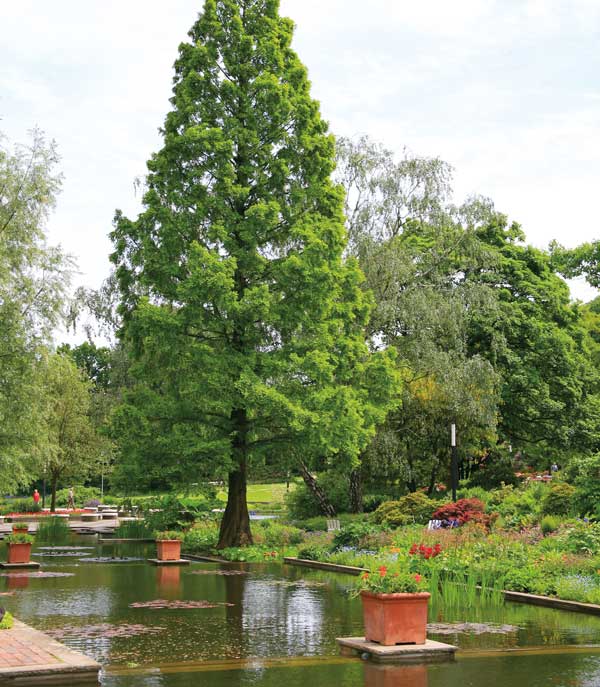Choice is not an option where soil is concerned. It comes with the house. While I don’t garden on clay soil, it’s among the most common gardening challenges – well, complaints – I hear from those who do.
There is no need to feel cursed. Clay soil doesn’t represent the overwhelming problem that some people imagine. You can learn to love your garden by putting time into soil preparation and devoting thought to your choice of plants. It is possible to grow a beautiful, healthy garden on clay.
First, you will need to put those glossy British gardening books aside, acknowledge what you’re working with and accept some realistic goals. By keeping at it over the years – adding organic matter and working with the soil structure – you can get the better of clay and have a garden that is the envy of the loamy crowd. It will also be important to choose plants that tolerate the conditions clay imposes.
Elemental Soil Science
Clay is often reddish in color. It absorbs water slowly and holds it for long periods, making it slow to dry out and warm up in the spring. There is a tendency to clump. If it’s allowed to bake in the heat of summer, it forms a hard, impermeable crust that’s difficult to rehydrate, which is why clay is great for making pottery. Clay makes shoveling and digging holes difficult. And, it sticks to shoes and garden implements. If clay soil is sticking to your shovel, stop working. It’s an indication that it is too wet, and you will only compound the problem by making it more compacted. If your soil is perpetually boggy, it is especially important to select plants that will tolerate this condition.
Gardeners need to be sure their helpers don’t walk through the beds when they are wet; this causes the soil to be compressed into the structure of bricks. And, although it goes against one’s impulse, clay soil should never be over cultivated (for instance, with a roto-tiller).
Clay does have some attributes. It is a fact that clay soils are more fertile than many other soil types (for example, sandy soil can’t hold a lot of nutrients). Because clay soil tends to hold water for long periods of time, less watering is needed. We have a tendency to over water our gardens, which is the single biggest cause of plants dying. (Watch for persistent wet spots after rain or watering.) The best plan for watering clay is deeply and less frequently. Be careful with automatic sprinkler systems.
Clay also doesn’t require the use of fertilizers. If you choose to use a fertilizer, apply lightly because clay holds onto fertilizers well. In fact, we should all avoid using fertilizers thoughtlessly as they eventually run off into our groundwater. When necessary, consider using an organic liquid fertilizer like fish emulsion or a slow-release fertilizer. Over-fertilized plants tend to be more susceptible to insect and disease problems because they are weakened by their accelerated growth.
Clay soils provide a basis for perennials to get their roots into. Unlike sandy soils, there is a minimum of heaving with cycles of freezing and thawing.
Although clay soils are high in minerals and nutrients, they need to be amended with organic matter such as shredded leaves, leaf mould, compost and well-rotted manure. This helps to make nutrients available to plant roots and at the same time aerates the soil, improving its tilth or texture. An annual top dressing of several inches of organic matter into the soil surface in late spring or early autumn is essential. Remember: Good compost is integral to your clay soil management plan. If you haven’t done so yet, get composting!
One might think that adding sand to clay would loosen it up, but all that does is produce cement. Some have reported that coarse builder’s sand helps; however, huge quantities are required.
Despite your best efforts, the fact is you are left to deal with clay soil. It is best to select plants that can cope with it. This is most important when planting trees because it is impossible to amend enough soil for their extensive root systems. Wet clay soil is low in oxygen. Plant trees on slopes that will drain. It is more important to dig a wide hole rather than a deep one. Select tree species that you’ve seen growing in swampy areas.
If all of this sounds daunting, consider improving your existing or new planting areas in small increments, observing which plants have done well through several seasons and continue to add them. Remember, it’s the fashion now to plant in drifts!


Leave a Reply